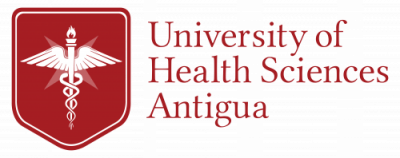TEN FACTORS TO CONSIDER WHEN CHOOSING A SPECIALTY
Last week we talked about the first five factors to consider when choosing a medical specialty. This week, we consider the remaining five factors.
6. LIFESTYLE CONSIDERATIONS
Medicine has always been a demanding profession. After working long hours in the hospital or clinic, physicians end up taking calls in the middle of the night to deliver a baby, remove an appendix, or admit a patient. Tired of delayed gratification and ungodly schedules, many of today’s doctors-in-training want careers that leave room for other interests or allow more time for their families. Compared to previous generations of physicians, the millennium medical student seeks a much better balance between life and work. They desire less night call, fewer hours spent in the hospital, and more control over their work schedules. Many are even willing to give up income and professional aspirations to have better personal lives and more free time. The current focus is now shifting to specialties with more controllable lifestyles and higher incomes relative to the length of training.
So which are the so-called lifestyle specialties that the most academically successful students are selecting? They include radiology, dermatology, emergency medicine, anesthesiology, pathology, ophthalmology, physical medicine and rehabilitation, and neurology (among others), all of which allow you to control the number of hours you devote to your practice.
You could potentially have a career with adequate family and leisure time, less stress, a more regular schedule, and an income commensurate to the workload. Although any specialty can offer job satisfaction, today’s medical student believes that only certain specialties allow enough time for family and recreational activities (instead of an overly taxing workload). The evidence is in the numbers: in 2019, the fill rate of programs in anesthesiology and physical medicine and rehabilitation increased by 7% and 13%, respectively. Diagnostic radiology added 44 new positions (a 6.3% increase) and filled all of them.
7. LENGTH OF TRAINING REQUIRED
Keep in mind that certain specialties require more years of residency training than others. In general, the shortest programs (3 years) are fields of primary care—internal medicine, pediatrics, family practice, and certain emergency medicine programs. Surgical specialties require much longer training, anywhere from 5 to 8 years. Within this spectrum, 4 to 5 years of residency training are necessary for careers in anesthesiology, pathology, dermatology, and radiology, for example. If you want to become a subspecialist, plan on adding even more years of training in a fellowship. Cardiologists, for instance, spend a total of 6 years learning the discipline before entering practice (a 3-year internal medicine residency plus a 3-year fellowship). Some doctors even “super-subspecialize,” such as the cardiologist who undertakes an additional fellowship year to master echocardiography. You could potentially be a physician-in-training forever!
This variable should only have limited influence on your choice of specialty. Yet some medical students are more concerned than others about the number of years residency training requires. Tired of delayed gratification, these students are quite anxious to finish training, practice medicine unsupervised, and start earning a real salary. Older, nontraditional students—especially those with children—often fall into this group. Others simply want to finish training so they can devote time to outside interests.
In any case, never forget that the arduous, low-paying years of residency and/or fellowship are only temporary. Medical students should not select a less-preferred specialty just because the residency training is shorter. Otherwise you may spend a lifetime as a rather dissatisfied physician. Is it really worth it?
8. COMPETITION FOR YOUR RESIDENCY POSITION
The increasing competitiveness of many fields of medicine has become a daunting obstacle. Because entrance into certain specialty programs is much more difficult than others, medical students must be well aware of their chances. Unfortunately, just because your heart is set on becoming a plastic surgeon or an ophthalmologist does not necessarily mean it will be possible. But medical students should not base their decisions on predictions such as, “I can only match into pediatrics,” or “I’m not going to bother with radiation oncology because I know I won’t get into it.”
Before contemplating any specialty of choice, take an honest assessment of your academic competitiveness. Compare the difficulty of obtaining a training position in that specialty with your chances of matching into it. Medical students interested in highly competitive specialties need a great deal of flexibility when making these choices. You might need a backup specialty (second or third choice option) if the field you want is slightly beyond your academic reach. By factoring in this less influential variable, future physicians will match with the most appropriate specialty.
9. INCOME POTENTIAL
Future reimbursement is an influential factor in some students’ decisions to enter a given specialty. New physicians with huge amounts of indebtedness are shunning the primary care fields because of their low earning potential. Others want to pay off their loans right away, so they lean toward specialties that shell out high starting salaries, like radiology, anesthesiology, and orthopedic surgery. But once loans are out of the picture, remember that you will practice in that specialty for the rest of your professional life. For that reason, financial remuneration should be only a less influential variable. No amount of income can make up for a lifetime of miserable days in the wrong specialty.
10. FUTURE JOB OPPORTUNITIES
It is hard to make career plans in an uncertain economic world. Even the supposed experts— who have been wrong many times before—cannot predict these kinds of changes, whether in the scope of practice of competing mid-level health providers or in the turf wars between specialists over shared procedures and tests. When choosing their dream specialty, students should pay little heed to its current or projected state of job opportunities. Shortages and surpluses can change rapidly by the end of residency training, so place this variable low on your list of influential factors. After all, have you ever heard of any unemployed, starving physicians?
TAKING YOU FROM A DREAM TO REALITY
If you’re ready to live your dream of becoming a physician, then UHSA can make that dream a reality!
UHSA has been producing physicians since 1982! We are the second oldest private medical school in the Caribbean basin. We know what you need to become a world-class physician, and have three programs to get you there.
Traditional MD Program – if you have the premedical requirements in place, then we would welcome you into our traditional MD program.
MD/Masters of Public Health (MPH) Program – if you have an interest in public health, international health, epidemiology, or even just enhancing your credentials when it comes time to apply for residency, then our joint MD/MPH program is right for you.
Premedical Program – Changing careers? Maybe you don’t have the premedical requirements, but have always had a dream of becoming a doctor? Then our premedical program is right for you. Using the same innovative problem-based learning techniques of our traditional MD program, this will give you the skills you need to earn your MD in the shortest time possible.
Contact our Admissions Team today to learn more!


